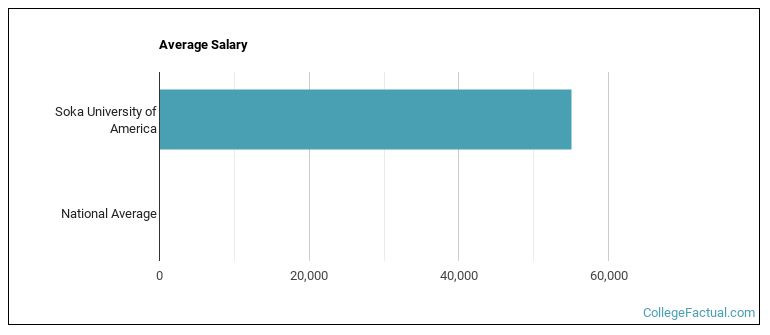 by our College Data Analytics Team
by our College Data Analytics TeamExplore the best ranked schools for the programs you are most interested in.
According to College Factual's 2025 analysis, Soka University is ranked #929 out of 2,152 schools in the nation that were analyzed for overall quality.
Soka University also holds the #108 spot on the Best Colleges in California ranking.
The acceptance rate at Soka University of America is a competitive 57%, so make sure you take your application seriously when putting it together. Even leaving out a minor detail could be a reason to move you to the rejection pile.
About 38% of students accepted to Soka University submitted their SAT scores. When looking at the 25th through the 75th percentile, SAT Evidence-Based Reading and Writing scores ranged between 550 and 660. Math scores were between 690 and 780.
The student to faculty ratio is often used to measure the number of teaching resources that a college or university offers its students. The national average for this metric is 15 to 1, but at Soka University it is much better at 7 to 1. That's good news for students who want to interact more on a personal level with their teachers.
In addition to the student to faculty ratio, some people look at what percentage of faculty members are full-time as a sign of how much time professors will be able to spend with their students. This is because part-time teachers may not be be on campus as much as their full-time counterparts.
The full-time faculty percentage at Soka University of America is 73%. This is higher than the national average of 47%.
The freshmen retention rate of 93% tells us that most first-year, full-time students like Soka University of America enough to come back for another year. This is a fair bit higher than the national average of 68%. That's certainly something to check off in the good column about the school.
Students are considered to have graduated on time if they finish their studies within four years. At Soka University the on-time graduation rate of first-time, full-time students is 80%. That is great when compared to the national average of 33.3%
Find out more about the retention and graduation rates at Soka University of America.
During the 2017-2018 academic year, there were 392 full-time undergraduates at Soka University.
| $0-30 K | $30K-48K | $48-75 | $75-110K | $110K + |
|---|---|---|---|---|
| $16,990 | $8,261 | $12,981 | $16,965 | $32,495 |
The net price is calculated by adding tuition, room, board and other costs and subtracting financial aid.Note that the net price is typically less than the published for a school. For more information on the sticker price of Soka University, see our tuition and fees and room and board pages.
Almost 66% of college students who graduated with the class of 2018 took out student loans, but that percentage varies from school to school. At Soka University, approximately 52% of students took out student loans averaging $7,481 a year. That adds up to $29,924 over four years for those students.
Get more details about paying for Soka University of America.

See which majors at Soka University of America make the most money.
Get more details about the location of Soka University of America.

Contact details for Soka University are given below.
| Contact Details | |
|---|---|
| Address: | 1 University Drive, Aliso Viejo, CA 92656-8081 |
| Phone: | 949-480-4000 |
| Website: | www.soka.edu/ |
| Most Popular Majors | Bachelor’s Degrees | Average Salary of Graduates |
|---|---|---|
| Liberal Arts General Studies | 97 | $19,776 |
| Educational Administration | 4 | NA |
If you’re considering Soka University of America, here are some more schools you may be interested in knowing more about.
Curious on how these schools stack up against Soka University? Pit them head to head with College Combat, our free interactive tool that lets you compare college on the features that matter most to you!
Footnotes
*The racial-ethnic minorities count is calculated by taking the total number of students and subtracting white students, international students, and students whose race/ethnicity was unknown. This number is then divided by the total number of students at the school to obtain the racial-ethnic minorities percentage.
References
More about our data sources and methodologies.